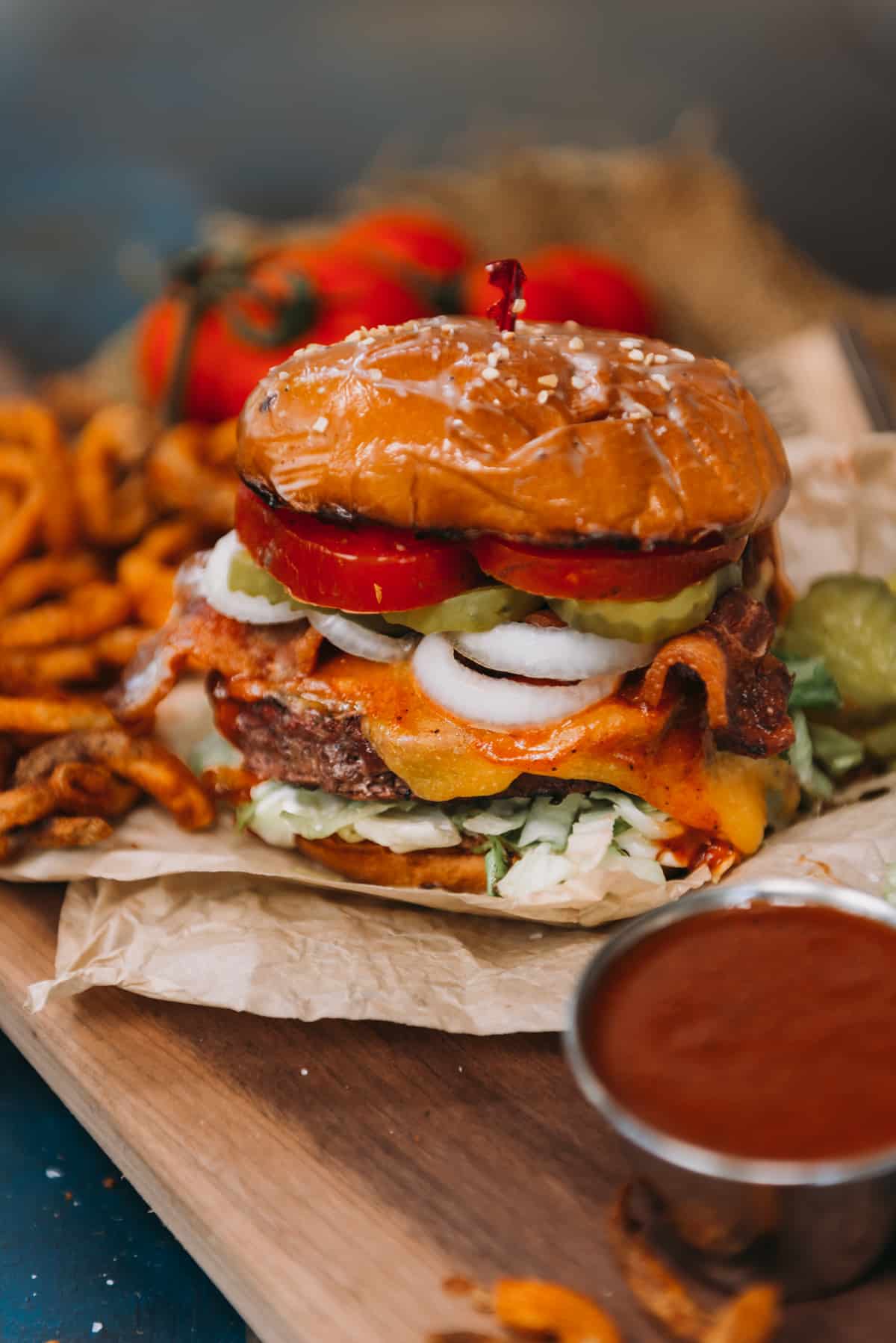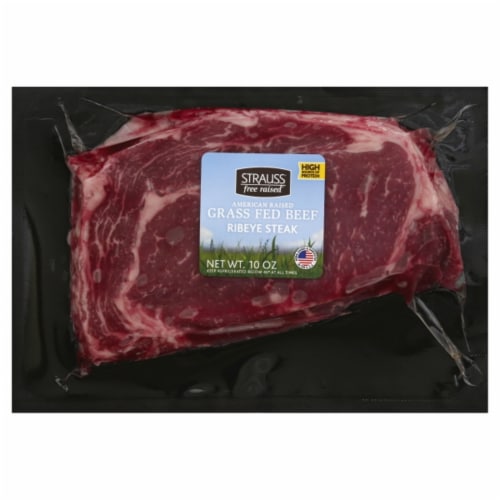The USDA grading scale makes it easy to choose the perfect steak or roast. The different grades of beef can be confusing at first. This guide breaks down Prime, Choice, and Select beef so you get the right quality for your needs.
There are different grades of beef from the USDA that you should know about if you want to improve your beef recipes. Similar to how knowing about beef labels can help you choose the right beef for your needs, knowing about the different grades of beef can do the same. If you want your beef recipes to turn out great, this guide will tell you how to choose the right grade of beef.
As grocery shoppers, we often come across unique store brands that promise high quality and great value. One such brand is Harris Teeter Rancher Beef, which can be found exclusively at Harris Teeter grocery stores.
But what exactly is Harris Teeter Rancher Beef? In this article, we’ll take a close look at this premium beef brand – its origins, standards, cuts, and what sets it apart. Whether you’re a loyal Harris Teeter shopper or simply curious about specialty grocery store brands, read on to learn all about Harris Teeter Rancher Beef
Overview of Harris Teeter Rancher Beef
Harris Teeter Rancher Beef is a brand of fresh beef products sold exclusively at Harris Teeter supermarkets. Harris Teeter introduced this brand in 2002 as a way to provide customers with beef of exceptional quality and tenderness
The Harris Teeter Rancher Beef line includes several premium cuts like ribeye, strip loin, tenderloin, and top blade. The brand promises these cuts will be high quality and incredibly tender – perfect for grilling, roasting, or pan searing.
One unique aspect of Harris Teeter Rancher Beef is that it carries the label “USDA Very Tender” indicating it has met certain standards related to tenderness.
History and Origins
To understand Harris Teeter Rancher Beef, it helps to know a bit about the history of Harris Teeter as a grocer. Founded in 1940 and headquartered in North Carolina, Harris Teeter operates over 250 stores across the Southeastern and Mid-Atlantic United States.
The chain has always prioritized high-quality fresh foods, especially produce, meat and seafood. In June 2002, Harris Teeter introduced the Harris Teeter Rancher Beef brand as an extension of this commitment to quality.
Harris Teeter Rancher Beef was developed through an innovative collaboration between Harris Teeter and its beef supplier, Cargill. Together, the two companies created production standards and protocols to ensure the line would meet Harris Teeter’s exceptionally high standards for tenderness and juiciness.
Cargill’s beef production facility was the first to earn the USDA’s “guaranteed tender” certification – a crucial factor that enabled the debut of Harris Teeter Rancher Beef.
Standards and Certifications
Harris Teeter Rancher Beef adheres to rigorous standards that enable it to consistently deliver tender, delicious beef cuts to customers:
-
USDA Very Tender – While not an official USDA grade, this label indicates the beef has met protocols tied to aging and tenderness that qualify it as “very tender.”
-
Cargill’s Guaranteed Tender Program – Certified by the USDA, this program sets strict standards for aging, marbling, and shear force to guarantee tender beef.
-
Harris Teeter’s High Standards – Developed in partnership with Harris Teeter meat experts, Rancher Beef must meet the grocer’s strict quality specifications.
-
Between 21 and 28 Days Wet-Aged – All Harris Teeter Rancher Beef is wet aged for at least 21 days to break down connective tissues for enhanced tenderness.
These certifications and standards give customers confidence that Harris Teeter Rancher Beef will live up to its promise of exceptional quality and satifying flavor.
Cuts of Beef Offered
Harris Teeter Rancher Beef includes a variety of premium beef cuts that are naturally tender and well-suited to quick, hot cooking methods:
-
Ribeye – Well-marbled for tenderness and flavor. The quintessentially beefy steak.
-
Strip Loin – Also called NY strip. Leaner than ribeye, but still tender with good beefy taste.
-
Tenderloin – Extremely tender though less fat. Makes fabulous steaks or roasts.
-
Top Blade – Flavorful like ribeye, tenderness close to tenderloin. A hidden gem.
-
Short Loin – Versatile and tender cut ideal for grilling or roasting whole.
These cuts allow Harris Teeter customers to enjoy consistently delicious steaks, roasts, kebabs, and more.
What Makes Harris Teeter Rancher Beef Special?
There are a few key factors that differentiate Harris Teeter Rancher Beef from typical supermarket beef:
-
Harris Teeter’s Hands-On Approach – The grocer works closely with ranches and processors to dictate standards.
-
“Very Tender” Designation – Proprietary label indicating Harris Teeter’s tenderness protocols.
-
Cargill’s Guaranteed Tender Certification – First-ever USDA certified tender program applied to Harris Teeter beef.
-
Focus on Marbling – Standards require ample marbling for flavor and moisture.
-
Aging – All beef aged 21+ days to guarantee a tender eating experience.
-
Limited Cuts – Only the naturally tender cuts make the cut in Harris Teeter Rancher Beef.
Thanks to this combination of rigorous standards, proprietary labeling, and hands-on quality control, Harris Teeter Rancher Beef manages to deliver exceptionally flavorful and tender beef to Harris Teeter patrons.
Common Questions about Harris Teeter Rancher Beef
If you’re not familiar with this specialty grocery store beef brand, chances are you have some questions. Here are answers to some of the most frequently asked questions about Harris Teeter Rancher Beef:
What are the most popular cuts of Harris Teeter Rancher Beef?
The ribeye and strip loin are likely the most popular, as they make wonderful steaks. Tenderloin is also up there for its extreme tenderness.
What grade of beef is Harris Teeter Rancher Beef?
It’s typically Select grade or higher, meaning there is some marbling for flavor and tenderness.
Is Harris Teeter Rancher Beef organic or grass-fed?
It is conventional beef, not organic or grass-fed. The cattle are sustainably raised on a nutritious diet.
Is Harris Teeter Rancher Beef available nationally?
No, Harris Teeter Rancher Beef is currently only sold regionally at Harris Teeter grocery store locations.
Is Harris Teeter Rancher Beef expensive?
It costs a bit more than regular store brand beef but less than premium branded beef, making it a good value.
Satisfying and Delicious Grocery Store Brand Beef
Harris Teeter Rancher Beef stands out as a grocery store beef brand that actually lives up to its claims of quality, tenderness, and reliable satisfaction. By partnering with its beef supplier and adhering to stringent standards, Harris Teeter manages to offer customers an affordable yet premium beef option for consistent enjoyment.
Next time you’re shopping at Harris Teeter, consider grabbing some Harris Teeter Rancher Beef for your next bbq, steak dinner, or family meal. With its tender texture and robust flavor, you’re guaranteed to appreciate the difference this specialty beef makes.
Feed, Breed, and Production Methods
- “Grass-Fed” means that the cattle that eat grass for most of their lives produce “grass-fed beef.” This beef is usually leaner and has a strong, earthy taste. The fat content is often lower compared to grain-fed beef.
- Corn and other grains are fed to cattle that have been grazing on grass. The cattle then produce grain-fed beef. People love this kind of beef because it has marbling, which are small lines of fat inside the meat. This usually makes beef that is more tender and flavorful but also has more fat.
There are many breeds of cattle, but here are three popular ones when discussing beef.
- Wagyu: Wagyu cattle come from Japan and are famous for having a lot of marbling. People love Wagyu beef because it is tender and has a rich, buttery flavor. The unique quality of Wagyu beef comes from the fact that the cattle are well taken care of. They even have their own grading scale. There is a difference between Wagyu and American Wagyu. Read the meat label to know this.
- When it comes to meat, Angus cattle are known for having well-marbled meat that is tender. Angus beef is often thought of as having consistent quality, and you can find it in many markets and restaurants. People in the US like both Red and Black Angus cattle. You may have seen Black Angus on the menus of steakhouses all along the country.
- Another popular breed of cattle is the Hereford, which makes leaner beef than the Angus. The flavor is strong, and the meat is usually cheaper.
- Conventional farming: Cattle may graze on pasture for part of their lives before switching to a grain-based diet at the end. This method is meant to make beef more quickly and on a larger scale.
- Organic farming: Cattle raised without man-made hormones or antibiotics are used to make organic beef. They graze on organic pastures and eat organic feed. The focus is on making sure the animals are healthy and getting beef that doesn’t have any artificial ingredients. Read more about how USDA-certified organic is regulated in the article “Understanding the Basics” from the USDA.
- Grass-finished: Some cattle are raised their whole lives on pasture and grass only. This method, called “grass-finishing,” makes beef leaner and gives it a unique flavor. You may see that the fat is more yellow because of what the animal ate.

Factors Considered in Grading Beef
Now, let’s dive into what the judges (or USDA) consider when grading beef. First up, there’s marbling, which is the tiny bits of fat within the meat. Graders look between the 12th and 13th ribs to determine the level of marbling in the cow. The more marbling, the better the grade.
Then, tenderness is key – the easier it is to chew, the higher the grade. Along with color and texture, these things are carefully looked at to give each piece of beef its final grade.
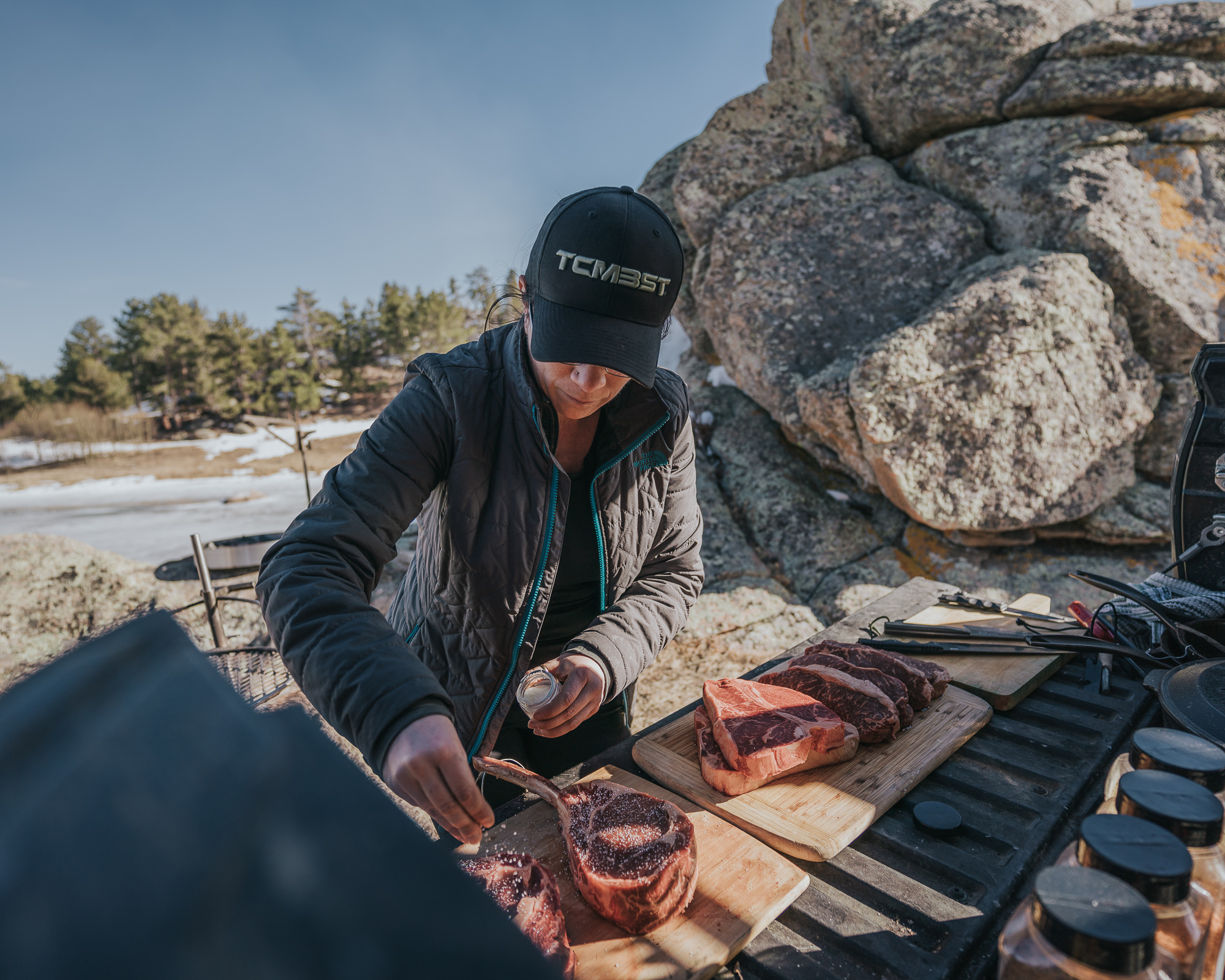
In the meat section of your local grocery store, you can usually find Prime, Choice, and Select grade beef.
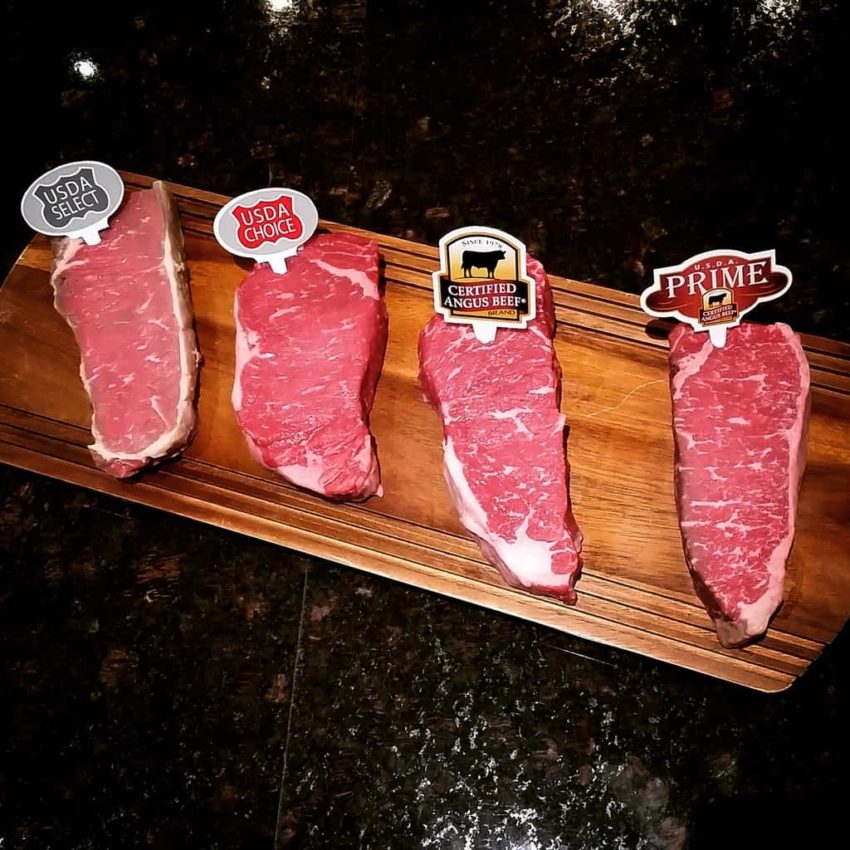
The highest grade of beef is Prime Grade. Most markets sell Prime Grade beef, which is the best beef you can get. It has a lot of marbling from intramuscular fat. This grade of beef is the most expensive and is usually only found in high-end restaurants. The higher fat content gives it a great taste and texture.
Prime Grade Beef comes from well-fed younger beef cattle, lending to its abundant marbling and flavor. However, the marbling isn’t the only thing separating Prime Beef from the rest of the USDA beef grades. The marbling must have a fat content of 8-13% to be considered Prime. You’d usually find Prime Grade types of steak like ribeyes or filet mignon at high-end restaurants.
Prime Grade Beef are some of the best steaks for grilling, especially for special occasions. This beef grade also benefits from cooking methods like reverse-searing, sous vide, roasting, and broiling. For example, our reverse-seared prime rib is the perfect recipe for a special occasion like the holidays. Making sous vide prime rib is another great way to cook this high-quality beef if you don’t mind not having the smoky flavor.
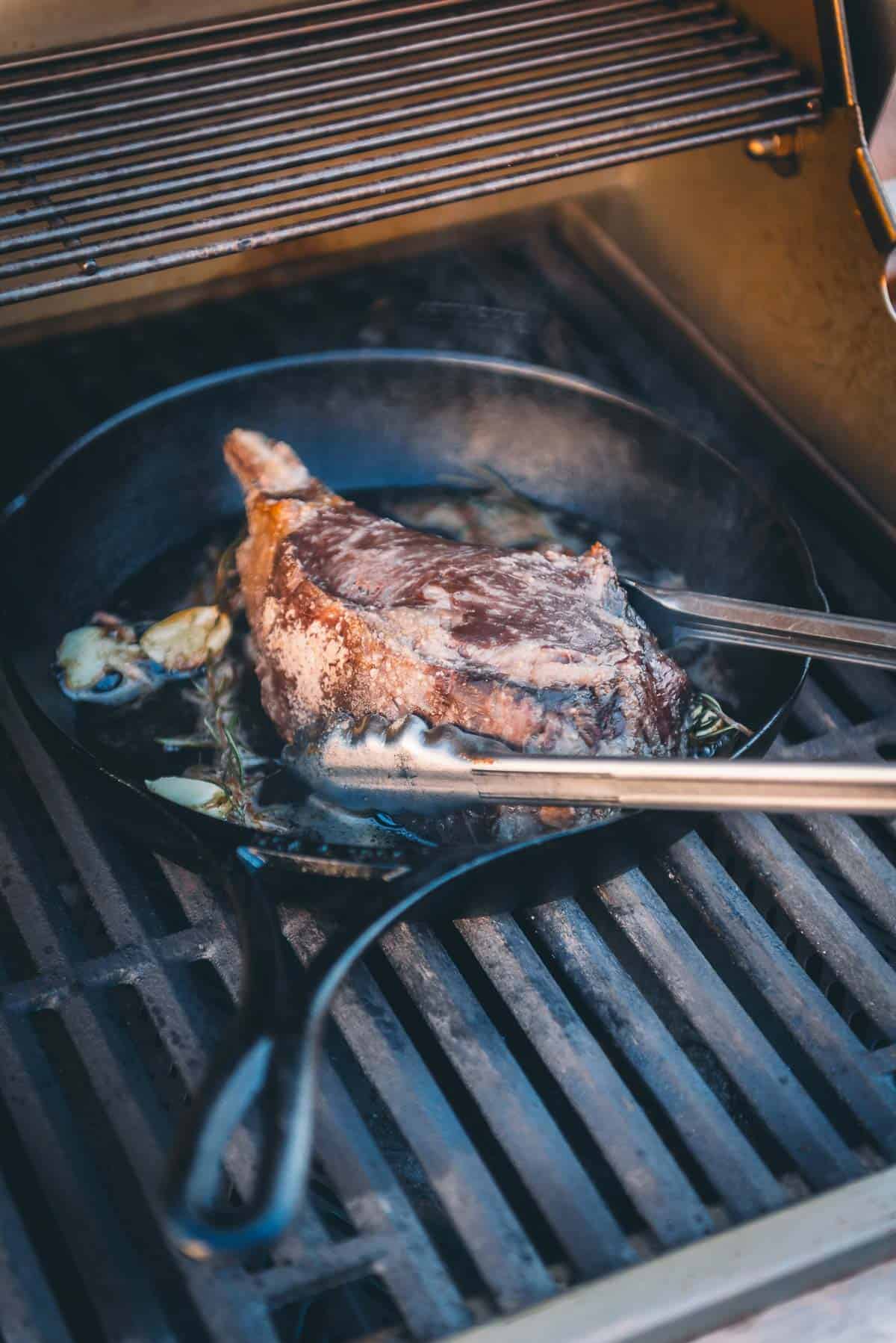
The next beef grade is Choice Grade Beef. Although it has less marbling than Prime Grade Beef, it’s still very flavorful and tasty. This grade is mostly found in grocery stores for its balance of taste and affordability.
Choice Grade Beef also comes from younger cows but only contains around 4-10% fat content. Although it has slightly less marbling than Prime Beef, it’s still flavorful and juicy. Around 50% of beef found in grocery stores in Choice Grade, making it highly accessible to the public.
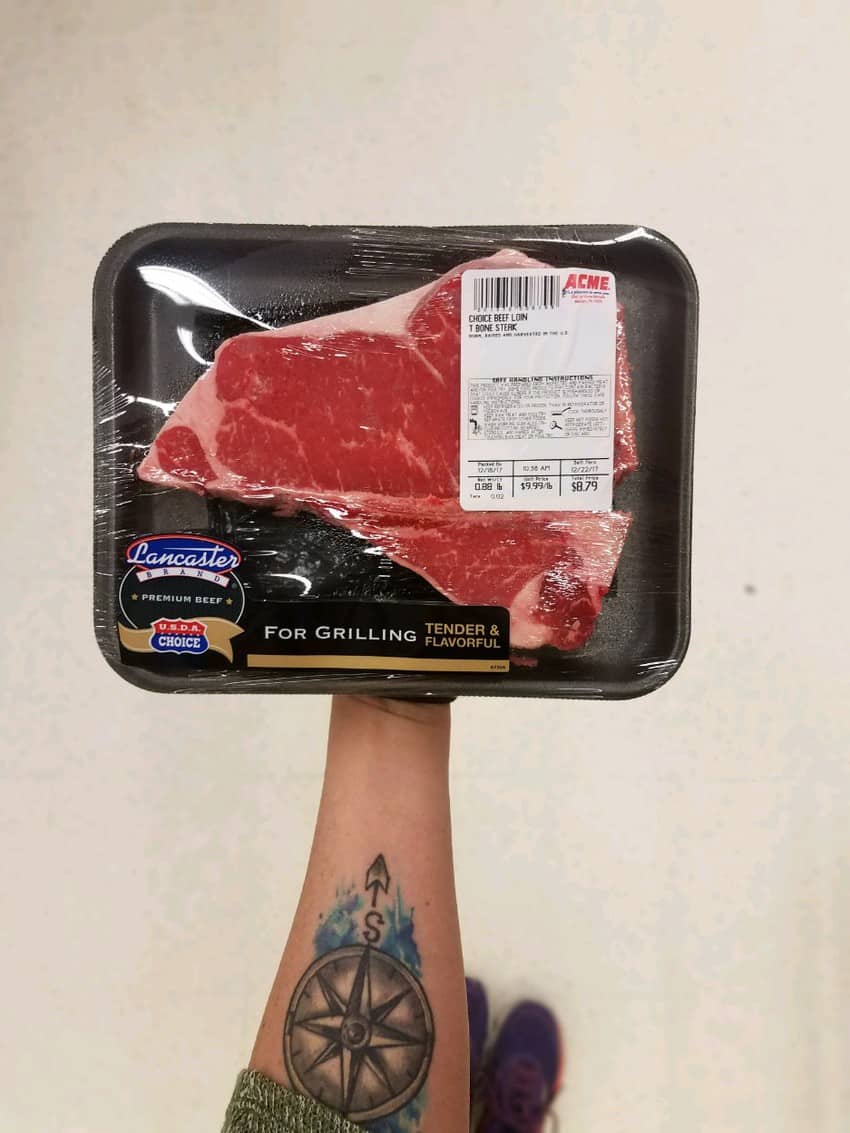


The last and lowest grade on the list is Select Grade Beef. The select grade of beef doesn’t have as much marbling as the other grades, so it’s not quite as tender and flavorful. This beef grade is usually found in fast food restaurants for its price point.
Select beef can also come from young cattle. It has only 2% to 4% fat, which makes it one of the leanest beef cuts on the market. It has even less fat than Choice or Prime grades, which makes it perfect for braising or marinating. This beef grade accounts for 21% of beef one can purchase.
Because Select Grade is pretty lean, it needs to be braised or marinated to bring out the most flavor, like in a slow cooker pot roast or on the grill. Don’t forget to cut against the grain for a more tender bite.
